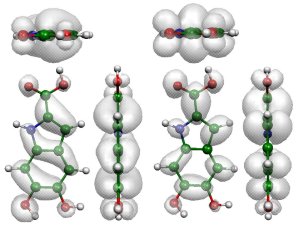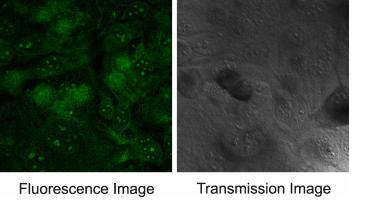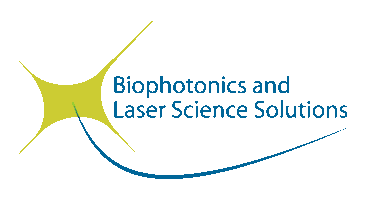 |
Program Leader: Dr Paul Meredith, Physics, University of Queensland
Overview
The Biological Spectroscopy and Devices program focuses on hard and soft tissues and the new paradigms needed to understand the properties of natural and synthetic melanins.
Optical techniques (ultra violet, visible or infra red) are incredibly powerful tools in helping us understand the electronic, vibrational and rotational structure of biological molecules. Techniques such as steady-state and time-resolved fluorescence emission and excitation (single molecule and ensemble averaged), infra red absorption and Raman spectroscopies are routinely applied in many clinical, industrial and research scenarios. Advanced quantum chemical and quantum many body techniques can be used to calculate the electronic and vibronic structures of complex biomolecules. Information from optical spectroscopies serves to verify these models, and the combined approach can often provide profound insight into the structure-property-function relationships that control the natural world.
Research
Core Strength: Optical Spectroscopy of Synthetic Melanins
 Current Project Areas:
Current Project Areas:- Synthesis of model dopa-melanin analogues
- Steady state and time resolved photoluminescence emission and excitation spectroscopy of synthetic and natural dopa-melanins
- Quantum chemistry and mesoscopic studies of melanins
Development Area: Spectroscopic Signatures of Natural Melanins Extracted from Healthy & Neoplastic Pigmented Tissues
Current Project Areas:
- Optical spectroscopy of melanin pigment extracted from cell lines derived from cancerous and non-cancerous human melanocytes
Sample Project Descriptions
Melanin Biophysics
 |
| Electron densities of DHICA (important precursor to melanin) calculated using density functional theory |
o Use of density function theory to understand the properties of melanin monomers and dimers, in particular use it as a basis for a model of the melanin system.
o Obtain information on melanin secondary structure. One approach is to use inelastic neutron scattering spectroscopy to study the low frequency phonon spectra of key melanin monomers and dimers, with the aim to better understand their supramolecular structure.
o To investigate and interpret the steady-state and time-resolved spectroscopic properties of melanin.
o To compare the spectroscopic properties of cancerous and non-cancerous human tissue melanin with natural and synthetic melanin.
In vivo Fluorescence Spectroscopy of Hard and Soft Pigmented Tissues
 This new interdisciplinary research is using advanced fluorescence spectroscopy techniques to study hard and soft pigmented tissues in vivo. The ultimate aim is to utilise these methods as non-invasive diagnostic probes for clinical use in detecting melanoma skin cancer and oral cancers. These same methods will also be useful for identifying the nature of organic pigments which cause tooth discolouration, which in turn, will allow selection of the appropriate tooth whitening techniques.
This new interdisciplinary research is using advanced fluorescence spectroscopy techniques to study hard and soft pigmented tissues in vivo. The ultimate aim is to utilise these methods as non-invasive diagnostic probes for clinical use in detecting melanoma skin cancer and oral cancers. These same methods will also be useful for identifying the nature of organic pigments which cause tooth discolouration, which in turn, will allow selection of the appropriate tooth whitening techniques.Expertise
- Molecular biophysics of melanins
- Quantum chemistry of melanins
- Synthesis of model bio-macromolecules
- Creation of thin solid bio-macromolecule films
- Steady state and time resolved spectroscopy of organic macromolecules
- Solid state measurements of organic semiconductors
- Fabrication of soft electronic devices
- Photovoltaic device construction and testing
- Microscopy of polymers and colloids
- Nano-engineering of device support structures and electrodes
- Surface analysis and chemical characterisation of polymers
- Novel low cost soft electronic materials
- Sol-gel optical coatings
Publications
2005
"Energy Transfer Dynamics of Nanocrystal-Polymer Composites", J. H. Warner, A. R Watt, E. A. Thomsen, P. Meredith & H. Rubinsztein-Dunlop, In Press J. Phys. Chem. B. (2005).
"Lead Sulphide Nanocrystal: Conducting Polymer Solar Cells", A.R. Watt, D. Blake, J.H. Warner, E.A. Thomsen, E.L. Tavenner, H. Rubinsztein-Dunlop & P. Meredith, Accepted J. Phys. D: Appl. Phys., (2004): arXiv/cond-mat/0408022.
"A New Approach to the Synthesis of Nanocrystal Conjugated Polymer Composites", A. Watt, H. Rubinsztein-Dunlop & P. Meredith, Accepted Synth. Met., (2004) arXiv/cond-mat/0407784.
"Multi-frame Digital Fourier Holography for Imaging Biological Tissue", S.A. Alexandrov, P. Meredith, T. McIntyre & A. Zvyagin, In Press, In. J. Image Sys. & Technol., (2005).
2004
"A First Principles Density-Functional Calculation of the Electronic and Vibrational Structure of Indolequinones: Key Melanin Monomeric Units", B. Powell, T. Baruah, N. Bernstein, K. Brake, R.H. McKenzie, P. Meredith and M.R. Pederson, J. Chem. Phys., 120(18), pp8608-8615 (2004).
"Radiative Relaxation Quantum Yields for Synthetic Eumelanin", P. Meredith & J. Riesz, Photochem. Photobiol., 79(2), pp211-216 (2004).
"Quantitative Photoluminescence of Broad Band Absorbing Melanins: A Procedure to Correct for Inner Filter and Re-absorption Effects", J. Riesz, J. Gilmore & P. Meredith, in press Spectrochimica Acta A: Molecular and Biomolecular Spectroscopy, (2004).
"Quantitative Emission and Excitation Spectroscopy of Synthetic Eumelanin", J. Riesz, J. Gilmore & P. Meredith, Biophys. J., 86(1): 607A-607A Part 2 Suppl. S, (2004).
"Optical Scatter Imaging Using Digital fourier Holography", K. Y. T. Seet, P. Meredith, P. Blazkiewidz & A. Zyagin, Submitted J. Phys. D: Appl. Phys., (2004).
"Absorption & Fluorescence Spectroscopy of Rhodamine 6G in Titanium Dioxide Nanocomposites", R. Vogel, P. Meredith, M.D. Harvey & H. Rubinsztein-Dunlop, Spectrochimica Acta A: Molecular and Biomolecular Spectroscopy, 60, pp245-249 (2004).
Conference presentations:
2005
"The melanins: form experiment to quantum chemistry to many-body quantum theory", B.J. Powell, J. Riesz, E. Moore, C. Giacomantonio, N. Berstein, M.R. Pederson, T. Barauh, K. Brake, R.H. McKenzie and P. Meredith, Australian Institute of Physics, January (2005).
"Charge transport in melanin, a disorder bio-organic conductor", C. Giacomantonio, B.J. Powell, E. Moore, R.H. McKenzie and P. Meredith, Australian Institute of Physics, January (2005).
"Melanin and Melanoma: the quantum chemistry of pheomelanin", J. Riesz, B.J. Powell, E. Moore, R.H. McKenzie and P. Meredith, Australian Institute of Physics, January (2005).
"The melanins: robust functionality through structural disorder", P. Meredith, B.J. Powell, J. riesz, C. Giacomantonio. A. Micolich, J. Eduardo de Albuquerque and E. Moore, Austrlian Institute of Physics, January (2005).
2004
"A first principles density-functional calculation of the electronic, vibrational and rotational structure of the key melanin monomers and dimmers based on 5,-dihydroxyindole and its tautomers", B.J. Powell, N. Bernstein, M.R. Pederson, T. Baruah, K. Brake, R.H. McKenzie & P. Meredith, Proc. International Congress on Synthetic Metals, Wollongong, July (2004).
"Electrochemically synthesized melanin-like biopolymer for device applications", S. Subianto, G. Will & P. Meredith, Proc. International Congress on Synthetic Metals, Wollongong, July (2004).
"The Melanins - A class of bio-organic conductor", P. Meredith, J. Riesz, C. Giacomantonio, S. Subianto, G. Will, A. Micolich and B. Powell, International Congress on Synthetic Metals, Wollongong, July (2004).
2003
"Novel conducting biopolymers based upon indolequinone macromolecules", P. Meredith, J. Riesz, S. Subianto, G. Will, A. Micolich, R. McKenzie & B. Powell, 1st Frontiers of Science and Technology Workshop on Soft Matter and Nanoscale Physics, Sydney, (2003).



